Level up your mass timber IQ & stay up-to-date on industry trends

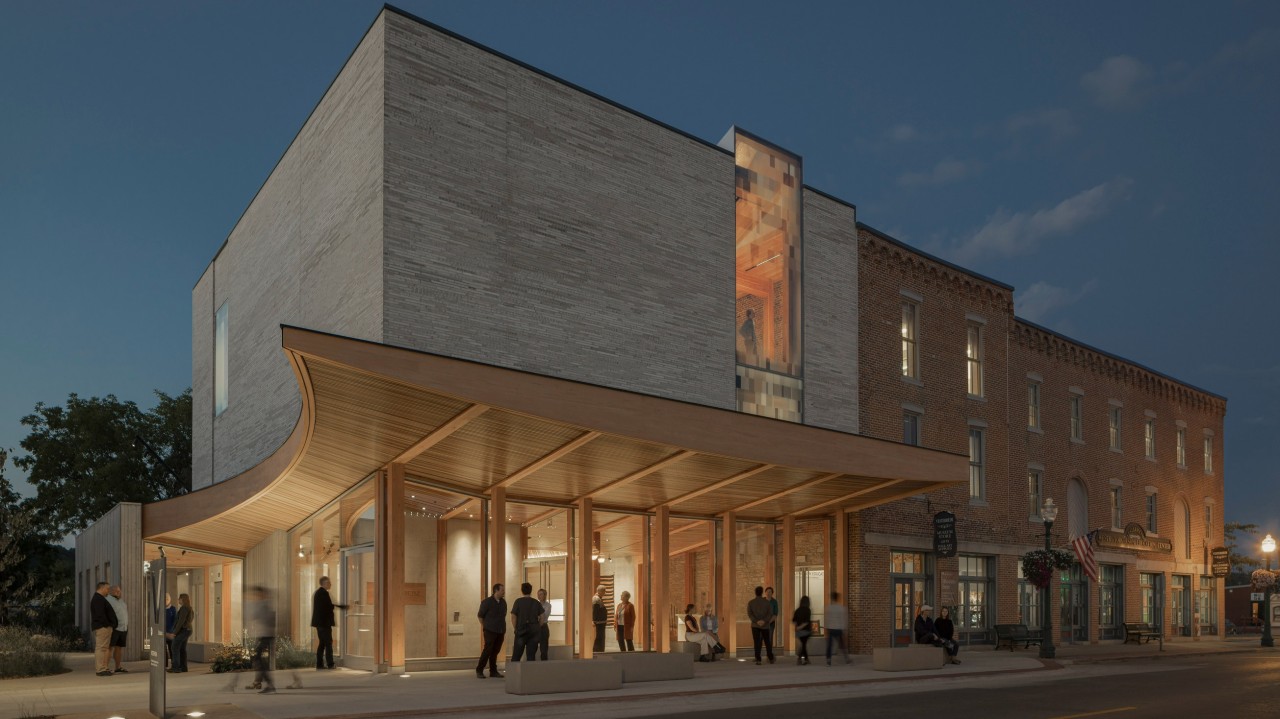
In the heart of Decorah, Iowa, a town steeped in Norwegian-American heritage, a new architectural gem has emerged, seamlessly blending tradition with contemporary design. The Vesterheim Commons, an 8,000-square-foot addition to the National Norwegian-American Museum and Folk Art School, stands as a testament to cultural preservation and innovative construction, prominently featuring the sustainable and aesthetically pleasing qualities of mass timber. Designed by the New York office of the acclaimed Norwegian architecture firm Snøhetta, in collaboration with Kansas City-based BNIM as the architect of record, the Commons offers a dynamic new entry point and gathering space for the institution, solidifying Decorah’s position as an unassuming center for Norwegian-American culture.
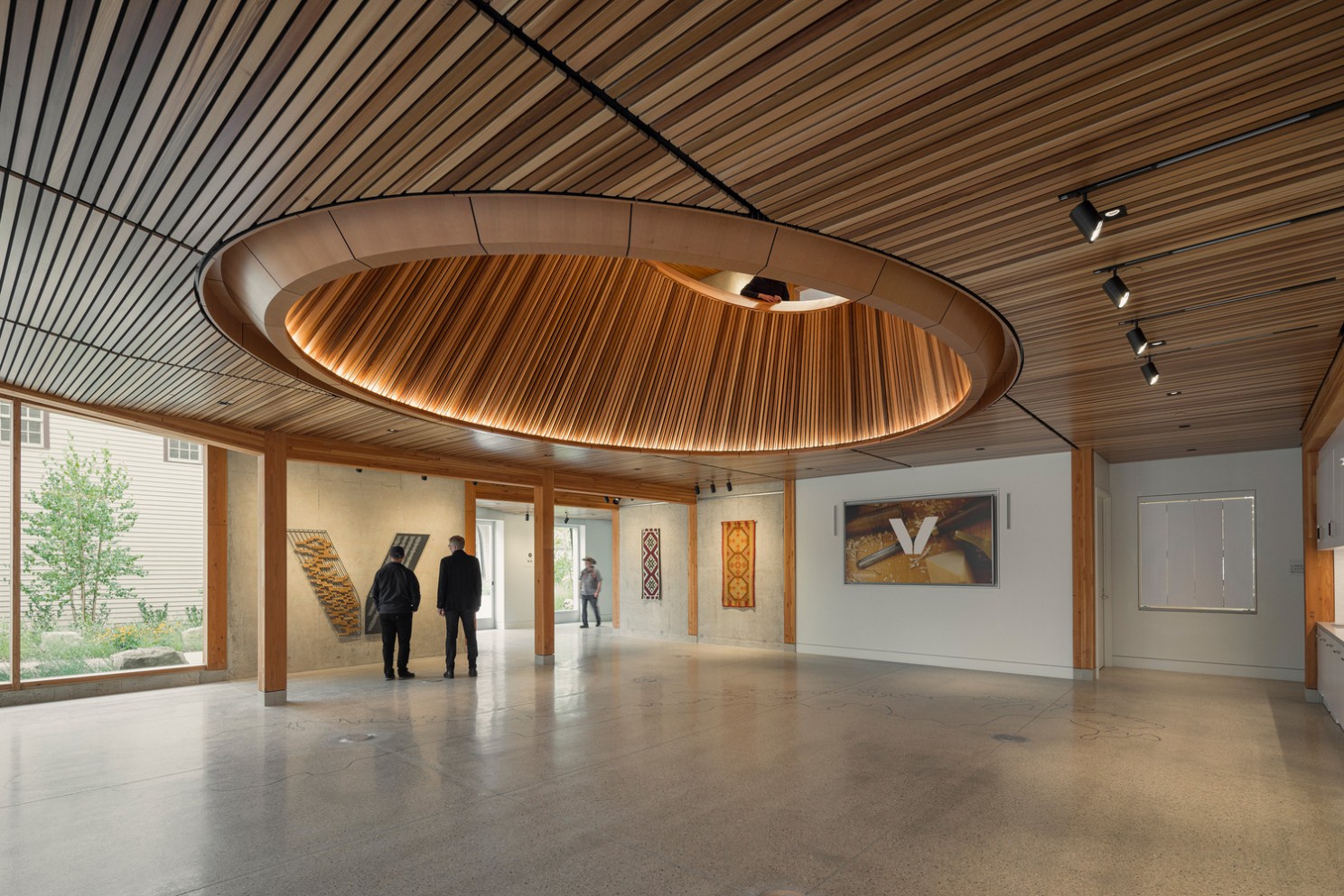
For a town whose population swells tenfold each July for Nordic Fest, Vesterheim has long been a year-round anchor, claiming to be the single-largest museum in the country dedicated to a single immigrant group. Snøhetta’s master plan, completed in 2019, aimed to unify the museum’s disparate buildings, and the Vesterheim Commons, was completed in September 2023.
The masonry-clad addition, extending the scale of the existing 19th-century structures along Water Street, conceals a remarkable secret within its walls: a mass timber frame fabricated in Albert Lea, Minnesota. This deliberate choice of material not only speaks to the tradition and craft of Norwegian-American culture but also underscores a commitment to sustainability.
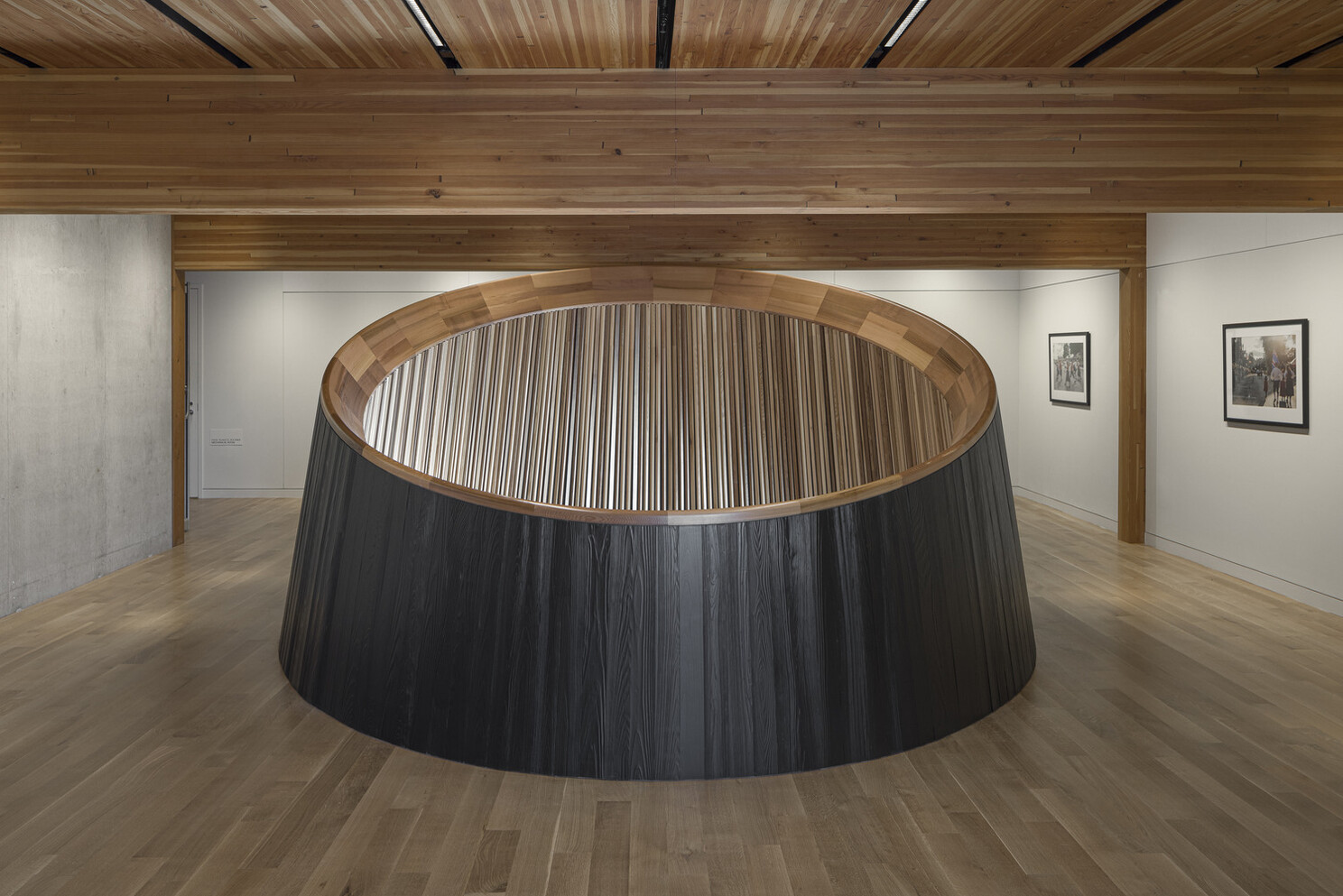
Visitors are immediately drawn to the south and west sides of the new building by a swooping cantilevered canopy, an architectural flourish designed to invoke traditional Norwegian boats. This inviting entrance not only provides shelter but also boldly reveals its glued-laminated timber. According to Snøhetta project leader Chad Carpenter, “Expressing the laminated beams, decking, and columns started a visual framework of seeing the exposed structure as you go through,”. This exposed interior structure showcases a blend of Douglas fir and western red cedar. For the canopy and the first-floor storefront columns, which bear the brunt of the elements, Alaskan yellow cedar was chosen for its durability and clean grain, Carpenter noted.
The intentional use of mass timber extended beyond structural elements. Wood mullions proved to be a more economical and sustainable choice than a conventional aluminum curtainwall system at the entrance. “Because we had this conversation going with a glulam fabricator, we were able to engineer mullions out of glulam sticks that were like chopsticks to these guys,” Carpenter explained, from ThinkWood. He further emphasized that wood emerged as the superior material, boasting a lower carbon footprint, a warmer aesthetic, and a lower cost compared to metal. “That was a fortunate bonus,” Carpenter from ThinkWood.
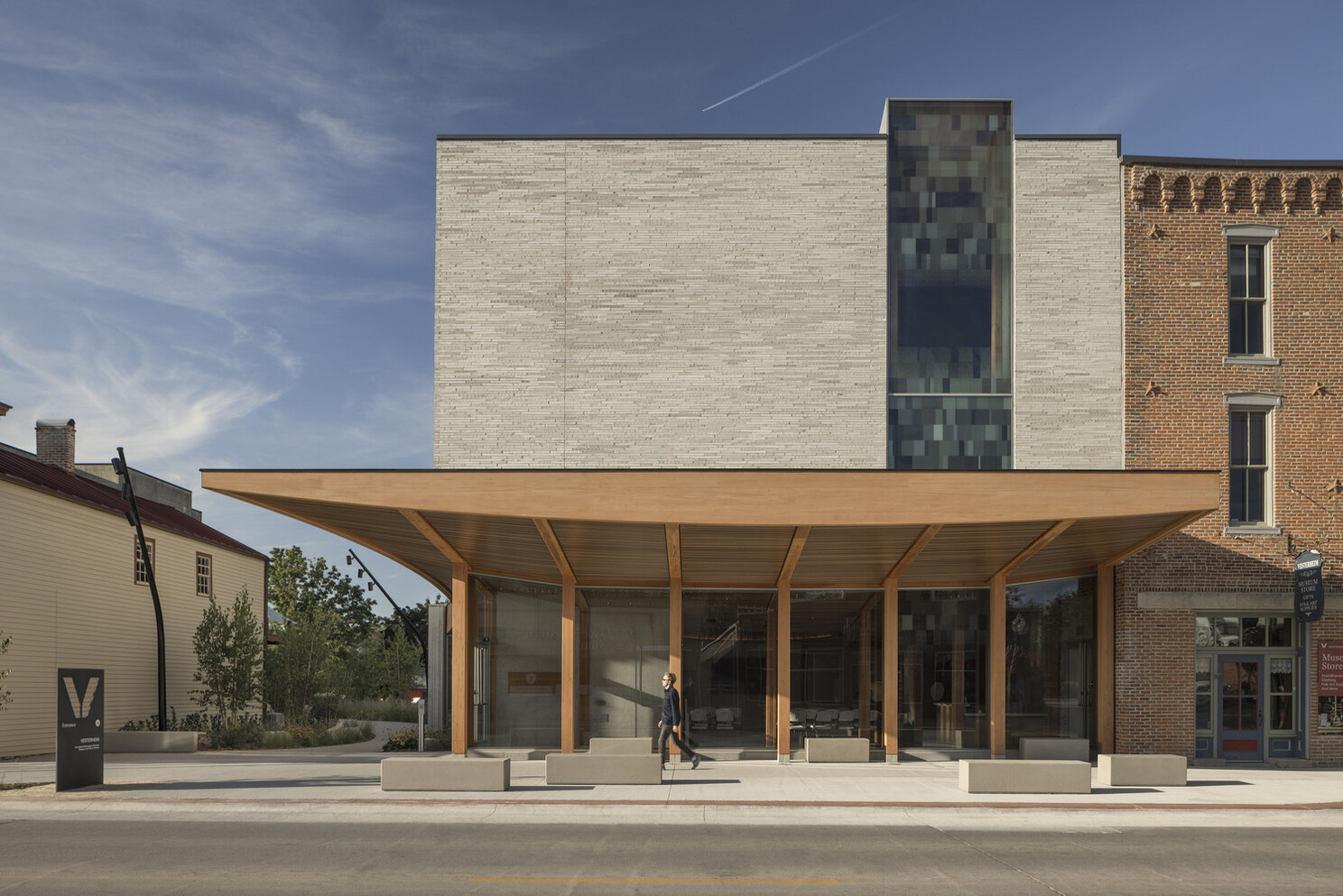
The 8,000 square-foot, three-story Vesterheim Commons houses a variety of spaces designed to enhance the museum experience. The ground floor features a gift shop and event space that opens to Water Street and a west-side plaza. This lobby, described by Snøhetta’s project lead Matt McMahon, offers a “cool respite from the hot sun outside” on opening day. He also highlighted the design’s solar strategies, noting how the wood-slat ceiling rises to bring in more daylight, while the canopy provides shade in the summer and allows lower winter sun to penetrate deeply into the lobby.
The architects collaborated with Arup to line the oculus’s interior with cedar planks of varying sizes to effectively diffuse sound. This oculus allows natural light to flood the lobby, creating a welcoming and airy atmosphere. The second floor is primarily configured as open gallery space, while the third floor accommodates a classroom, studio, and offices, including a collection study space and digital lab to broaden the reach of Vesterheim’s collections.
The design of the Vesterheim Commons is deeply rooted in Norwegian culture. The welcoming canopy, inspired by the designs of renowned Norwegian boats like the Colin Archer boat and the Restauration craft, creates a protected and highly visible entry. The mass timber frames with concrete footings are reminiscent of the stone foundations of the Norwegian “stabbur,” traditional storehouses. Even the textured concrete used in the walls draws inspiration from the work of Erling Viksja, the architect of Norway’s national government building. Inside, the oculus’s form is said to resemble Saami tents, known as “Lavvu”.
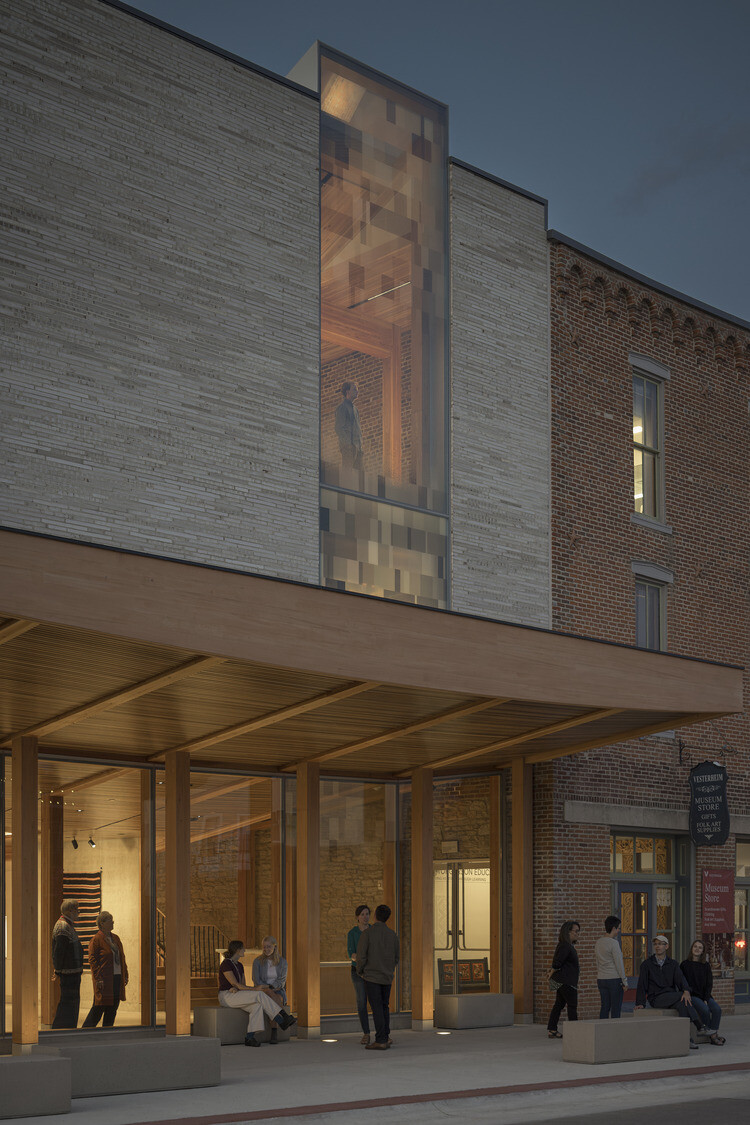
The project not only provides functional spaces but also strengthens the connection between the museum collection and the Folk Art School. This integration aims to enrich the visitor experience, both for those physically present in Decorah and those participating digitally through the new video and photography production studio. The Commons also creates a central outdoor gathering space, unifying the campus and extending Vesterheim’s Heritage Park with Water Street. The Heritage Park’s urban woodland, inspired by the similarities between the Driftless region of Northeastern Iowa and the wooded landscapes of Norway, further reinforces this connection to the land.
Construction of the Vesterheim Commons began in March 2022 and concluded with its public opening in September 2023. While specific figures for the amount of timber used and the project's budget are not explicitly stated in the provided sources, the consistent emphasis on the extensive use of glulam beams, columns, and GLT panels, along with light-frame wood construction, clearly indicates a significant commitment to mass timber in this project.
According to Chad Carpenter, “There’s an optimism in the client and in the place, and that is what we wanted to really see in the building,” - ThinkWood. The monumental treatment of timber in the canopy and the simple palette effectively draw visitors into the building, creating an iconic image that reflects the town, its traditions, and its unique community.
Vesterheim Commons stands as visionary design, with respect for cultural heritage, and a commitment to sustainable building practices can converge to create a truly exceptional place. The innovative use of mass timber not only significantly reduces the building's environmental footprint but also imbues it with a tangible warmth and character that deeply resonates with the cultural narratives it safeguards. This project is far more than an addition; it represents reinvigoration of Vesterheim’s enduring mission, seamlessly connecting the past with the future and fostering meaningful connections between the local community and a global audience.

Lead mass timber projects with confidence — and leave delays, redesigns, and budget blowups behind.
✅ Solve early-stage design, sourcing, insurance, permitting, code & cost hurdles before they derail your project.
✅ Find technical answers on design, detailing, procurement, embodied carbon ROI, hybrid systems & more.
✅ Build relationships with developers, GCs, architects, and engineers shaping mass timber’s future.
Get your ticket— and get the insights, skills, and network to deliver mass timber projects successfully.


.png)

.jpg)